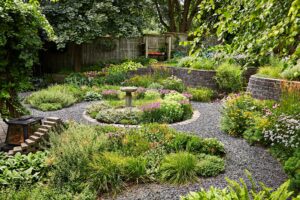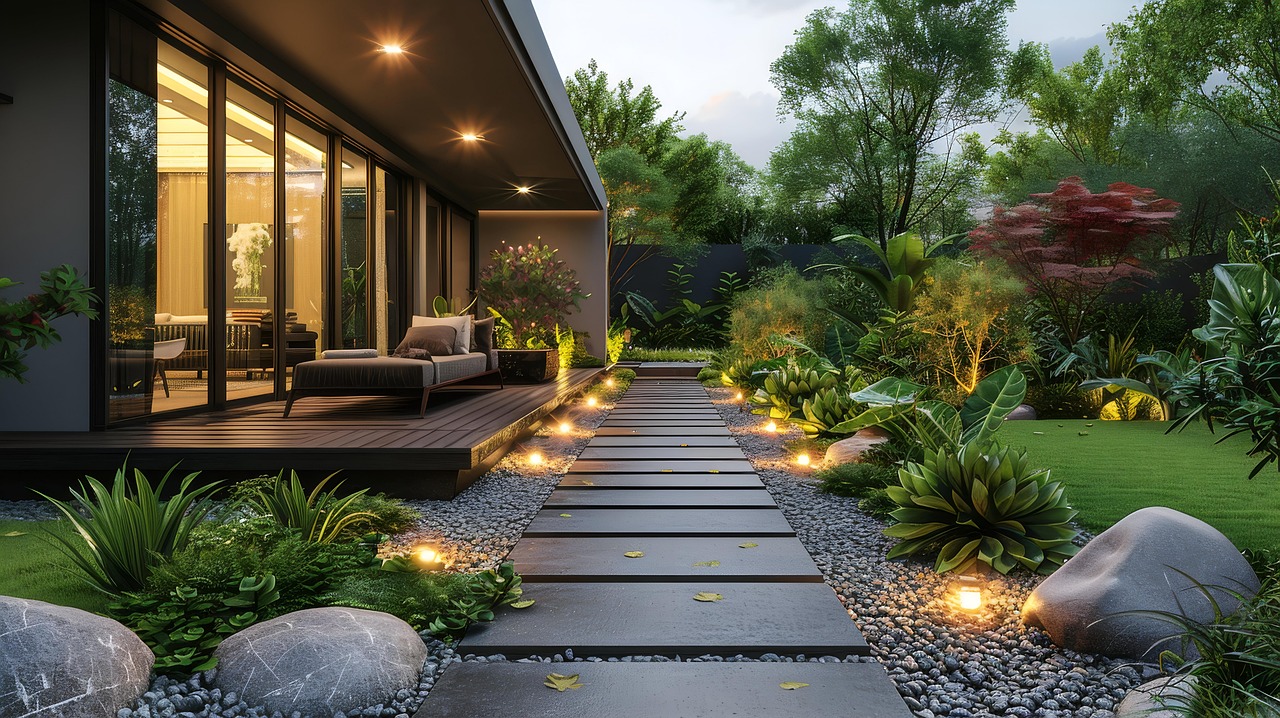A well-designed garden can bring beauty and tranquility to your home, but maintaining it can be time-consuming. If you want a beautiful outdoor space without the hassle of constant upkeep, a low-maintenance garden is the perfect solution. Here are expert tips to help you create a stunning, easy-care garden.
1. Choose the Right Plants
Selecting the right plants is crucial for a low-maintenance garden. Opt for:
- Native Plants – They are adapted to local climate conditions and require less water and care.
- Drought-Tolerant Plants – Succulents, lavender, and ornamental grasses thrive with minimal watering.
- Perennials – These plants return year after year, reducing the need for replanting.
2. Use Mulch to Reduce Weeds
Mulching is a simple yet effective way to cut down on weeding and watering. Organic mulches like bark chips or compost help retain moisture, regulate soil temperature, and prevent weeds from growing.

3. Opt for Low-Maintenance Lawn Alternatives
Traditional lawns require frequent mowing, watering, and fertilizing. Consider alternatives such as:
- Artificial Grass – Provides a lush look without the upkeep.
- Ground Covers – Creeping thyme, clover, and moss are great low-maintenance options.
- Gravel or Paved Areas – Reduce grassy areas by incorporating stone pathways or patios.
4. Install an Automated Irrigation System
A drip irrigation system or soaker hoses can efficiently water plants at the root level while minimizing water waste. Automated timers ensure that your garden gets the right amount of water with minimal effort.
5. Choose Durable Hardscaping Materials
Incorporating hardscaping elements reduces maintenance while adding structure and visual appeal to your garden. Consider:
- Paved Walkways – Use stone, brick, or concrete for long-lasting, low-maintenance paths.
- Raised Beds – Easier to maintain and help with weed control.
- Decorative Rocks and Pebbles – Add texture and style while reducing the need for plants.
6. Group Plants by Watering Needs
Arranging plants with similar water requirements together ensures efficient irrigation. This technique, known as hydrozoning, prevents overwatering and reduces maintenance time.
7. Incorporate Low-Maintenance Trees and Shrubs
Choose slow-growing trees and shrubs that require minimal pruning. Some great options include:
- Evergreens – Provide year-round greenery with little upkeep.
- Native Shrubs – Adapted to local conditions and require less attention.
- Ornamental Grasses – Add movement and texture without frequent care.
8. Minimize the Need for Fertilizers and Pesticides
Using natural compost and organic mulch can improve soil quality without the need for chemical fertilizers. Additionally, companion planting (pairing plants that naturally repel pests) can reduce the need for pesticides.
9. Keep It Simple
A clutter-free garden with fewer plant varieties, well-defined pathways, and neatly arranged features will be easier to maintain. Avoid overcrowding plants, as this can lead to overgrowth and increased upkeep.
10. Use Self-Sustaining Features
Incorporate features that take care of themselves, such as:
- Rainwater Collection Systems – Reduce reliance on municipal water.
- Self-Watering Planters – Keep plants hydrated with minimal effort.
- Compost Bins – Create nutrient-rich soil without chemical fertilizers.



